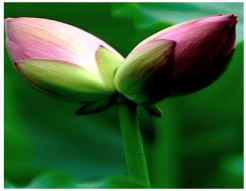
The young unopened flower is termed as______.
Answer
558.9k+ views
Hint: Flower is the reproductive entity in the flowering plants. The vital role of the flower is sexual reproduction by providing a system for the junction of sperms with eggs. It is the part which makes the seed and has the important role in expanding the ecosystem.
Complete answer:
An ideal flower consists of four parts: Calyx, Corolla, Androecium and Gynoecium.
Calyx is the exterior coil of the flower which is of green colour.
Corolla is found below the calyx and are aromatic and colourful. Androecium is the male element of the flowering plant with the male gametes present.
Gynoecium is the female element of the flowering plant with the female gametes present. Flower develops into the premature, unopened structure known as bud. A flower bud is the production of premature flower bloom. When the maturation starts in a flower it transforms into a flower bud and develops a bloom and finally a seed. It is a tiny protuberance found on the stem of vascular plants which produce into either a flower, leaf or shoot. Buds generate from meristem. These flower buds are the modified version of leaves. It is found that because of bad nutrition buds become dormant. Buds shields the sensitive part of the stem. It can also be done by leaf base,hairs etc.

The young unopened flower is called bud. A bud especially in cold climates are covered by scales which tightly bind the sensitive part of the bud. Plumule is the first bud of the plant. Buds are important for the identification of plants in the winter season as most of the leaves fall at that time. Buds according to the location are classified as: Terminal bud- is the bud which is found at the tip of stem. Axillary bud- is the bud which is found at the axil of a leaf. Adventitious bud- it occurs somewhere else like in the roots or in the trunk.
The young unopened flower is termed as bud.
Note: A bud is the young shoots which are tiny stems which are overlaid by immature leaves which properly shields the growing tip. Hence the growing stem tips are shielded like root tips which are embedded by root caps.
Complete answer:
An ideal flower consists of four parts: Calyx, Corolla, Androecium and Gynoecium.
Calyx is the exterior coil of the flower which is of green colour.
Corolla is found below the calyx and are aromatic and colourful. Androecium is the male element of the flowering plant with the male gametes present.
Gynoecium is the female element of the flowering plant with the female gametes present. Flower develops into the premature, unopened structure known as bud. A flower bud is the production of premature flower bloom. When the maturation starts in a flower it transforms into a flower bud and develops a bloom and finally a seed. It is a tiny protuberance found on the stem of vascular plants which produce into either a flower, leaf or shoot. Buds generate from meristem. These flower buds are the modified version of leaves. It is found that because of bad nutrition buds become dormant. Buds shields the sensitive part of the stem. It can also be done by leaf base,hairs etc.

The young unopened flower is called bud. A bud especially in cold climates are covered by scales which tightly bind the sensitive part of the bud. Plumule is the first bud of the plant. Buds are important for the identification of plants in the winter season as most of the leaves fall at that time. Buds according to the location are classified as: Terminal bud- is the bud which is found at the tip of stem. Axillary bud- is the bud which is found at the axil of a leaf. Adventitious bud- it occurs somewhere else like in the roots or in the trunk.
The young unopened flower is termed as bud.
Note: A bud is the young shoots which are tiny stems which are overlaid by immature leaves which properly shields the growing tip. Hence the growing stem tips are shielded like root tips which are embedded by root caps.
Recently Updated Pages
Why is there a time difference of about 5 hours between class 10 social science CBSE

Master Class 8 Social Science: Engaging Questions & Answers for Success

Master Class 8 Science: Engaging Questions & Answers for Success

Master Class 8 Maths: Engaging Questions & Answers for Success

Class 8 Question and Answer - Your Ultimate Solutions Guide

Full form of MODEM?

Trending doubts
What is BLO What is the full form of BLO class 8 social science CBSE

Citizens of India can vote at the age of A 18 years class 8 social science CBSE

Full form of STD, ISD and PCO

Right to vote is a AFundamental Right BFundamental class 8 social science CBSE

Summary of the poem Where the Mind is Without Fear class 8 english CBSE

What is the difference between rai and mustard see class 8 biology CBSE




